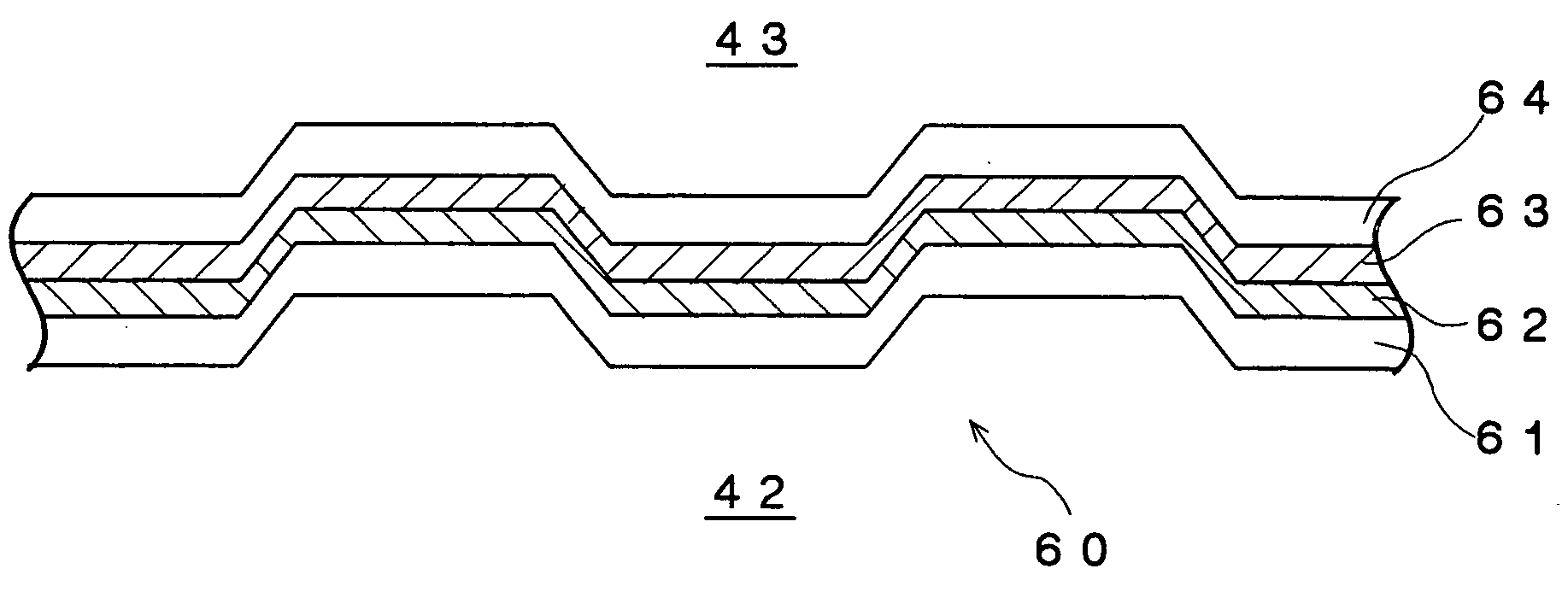Optical recording medium
a recording medium and write-once technology, applied in the field can solve the problems of difficult to improve long-time storage reliability, difficult to store the initial recorded data in the recording, and inability to erase and rewrite data recorded in a write-once type of optical recording mediums
- Summary
- Abstract
- Description
- Claims
- Application Information
AI Technical Summary
Benefits of technology
Problems solved by technology
Method used
Image
Examples
working example 1
[0134] An optical recording medium sample # 1 was fabricated in the following manner.
[0135] A disk-like polycarbonate substrate having a thickness of 1.1 mm and a diameter of 120 mm and formed with grooves and lands on the surface thereof was first fabricated by an injection molding process so that the track pitch (groove pitch) was equal to 0.32 .mu.m.
[0136] Then, the polycarbonate substrate was set on a sputtering apparatus and a second dielectric layer containing a mixture of ZnS and SiO.sub.2 and having a thickness of 25 nm, a second recording film containing Cu as a primary component and 10 atomic % of Al as an additive and having a thickness of 5 nm, a first recording film containing Si as a primary component and having a thickness of 4 nm and a first dielectric film containing TiO.sub.2 and having a thickness of 30 nm were sequentially formed on the surface of the polycarbonate substrate on which the grooves and lands were formed, using the sputtering process.
[0137] The mole ...
working example 2
[0162] Each of the optical recording medium samples #1 to #11 was irradiated with a laser beam having a wavelength of 405 nm and the amount of the laser beam transmitted through each of the optical recording medium samples #1 to #11 was measured, thereby measuring the light transmittance of each sample.
[0163] The results of the measurement are shown in FIG. 18.
[0164] As shown in FIG. 18, it was found that the optical recording samples in which the amount of Al added to the second recording film was 10 atomic % to 30 atomic % had light transmittances equal to or higher than 50%, i.e., they had sufficiently high light transmittances.
[0165] The present invention has thus been shown and described with reference to specific embodiments and working examples. However, it should be noted that the present invention is in no way limited to the details of the described arrangements but changes and modifications may be made without departing from the scope of the appended claims.
[0166] For exam...
PUM
| Property | Measurement | Unit |
|---|---|---|
| thickness | aaaaa | aaaaa |
| wavelength | aaaaa | aaaaa |
| thickness | aaaaa | aaaaa |
Abstract
Description
Claims
Application Information
 Login to View More
Login to View More - R&D
- Intellectual Property
- Life Sciences
- Materials
- Tech Scout
- Unparalleled Data Quality
- Higher Quality Content
- 60% Fewer Hallucinations
Browse by: Latest US Patents, China's latest patents, Technical Efficacy Thesaurus, Application Domain, Technology Topic, Popular Technical Reports.
© 2025 PatSnap. All rights reserved.Legal|Privacy policy|Modern Slavery Act Transparency Statement|Sitemap|About US| Contact US: help@patsnap.com



